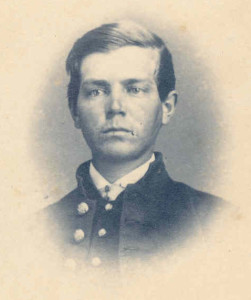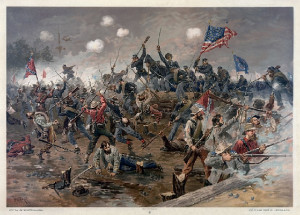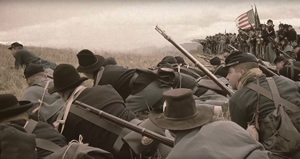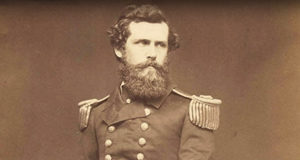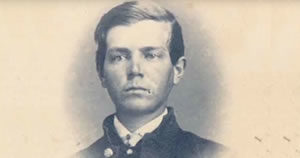The excerpt below is from John Kuhl’s 2013 book, Hunterdon County in the Civil War: The Times, The Men, Their Stories. Full source information can be found at the bottom of the page.
Paul had been born in Copper Hill [New Jersey] on 26 November 1842 to Leonard P. Kuhl and Dorothy Sutphin. The Kuhl family had come from Germany to Hunterdon County in the 1720s and farmed there ever since. They had also dabbled in the mercantile business and had gained some local prominence over the years. Paul’s brother Richard had been born lame but had become a good lawyer and would go on to serve as a state senator. Paul’s name appears on the 1861 militia rolls as the 2nd Lieutenant of the Copper Hill Guards. When the 15th regiment was forming at Flemington Paul enlisted at age 19 and was mustered as a Corporal in its Company A on 5 August 1862. Promotion to 5th Sergeant soon followed and just before Chancellorsville he was promoted to 1st Sergeant, the highest ranking non-commissioned officer in the company. This rank was typically a springboard to a commission and Paul would certainly have looked forward to an officer’s rank.
He survived the first four of the eight days of the blood bath at Spotsylvania where the regimental marker on the field records 312 casualties among their 444 men on that field. On the fifth day, 12 May, the 15th was the flanking regiment of the 6th Corps attack as it struck the Confederate horseshoe line at the Bloody Angle. In his regimental history Chaplain Haines records that Paul had made it up to the rebel lines but had been shot down there. In a letter of 16 May to Paul’s brother Dick, fellow townsman James Bullock also of Company A, reported having gone out the previous day to recover Paul’s body despite the real risk of enemy sharpshooters still in the area. He and his detail brought in and buried the bodies of Captain Walker, Captain Shimer, Lieutenant Justice (of Lambertville), and Paul. They were interred in that order in a row on nearby Brown’s farm. “Paul’s body was nearly riddled. His first wound was in the right leg and he had tied his handkerchief around it (Haines said he had fashioned a tourniquet with that and his ramrod). He would have recovered, I guess, if he could have got out. His Right Arm and Right Breast were struck two or three times. His pockets had been rifled, but Bellis found his Testament, a Comb, and 2 pictures in one pocket, also a few postage stamps. I have put the Testament, Comb, and Pictures up and put them in the mail…The horrors of the last few days cannot be imagined, let alone be described.” Paul had long been known as a pious and “consistent Christian”. At the end, a wounded fellow soldier lying next to Paul later remembered that he had uttered, “Tell the Captain I followed him as far as I could, but hereafter I shall be with my savior who alone can render all the help I need.” In 1877 Paul’s remains were dug up and re-interred in the National Cemetery in Fredericksburg, VA. A cenotaph, or memorial stone, now sits in the cemetery of the Flemington Presbyterian Church to mark his passing.
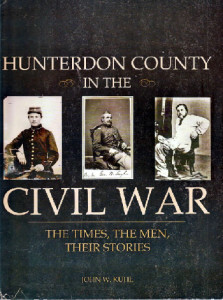 SOURCE: Kuhl, John W., Hunterdon County in the Civil War: The Times, The Men, Their Stories. Flemington: Hunterdon County Cultural and Heritage Commission, 2013. Print.
SOURCE: Kuhl, John W., Hunterdon County in the Civil War: The Times, The Men, Their Stories. Flemington: Hunterdon County Cultural and Heritage Commission, 2013. Print.
Re-watch the video:



